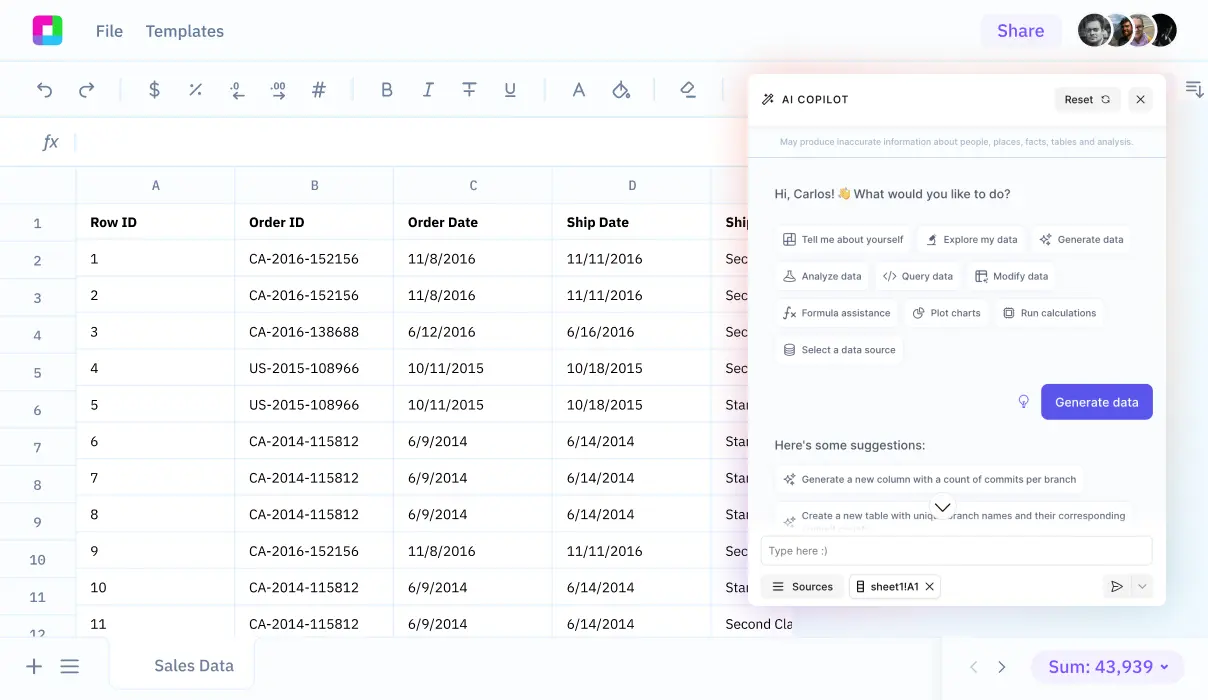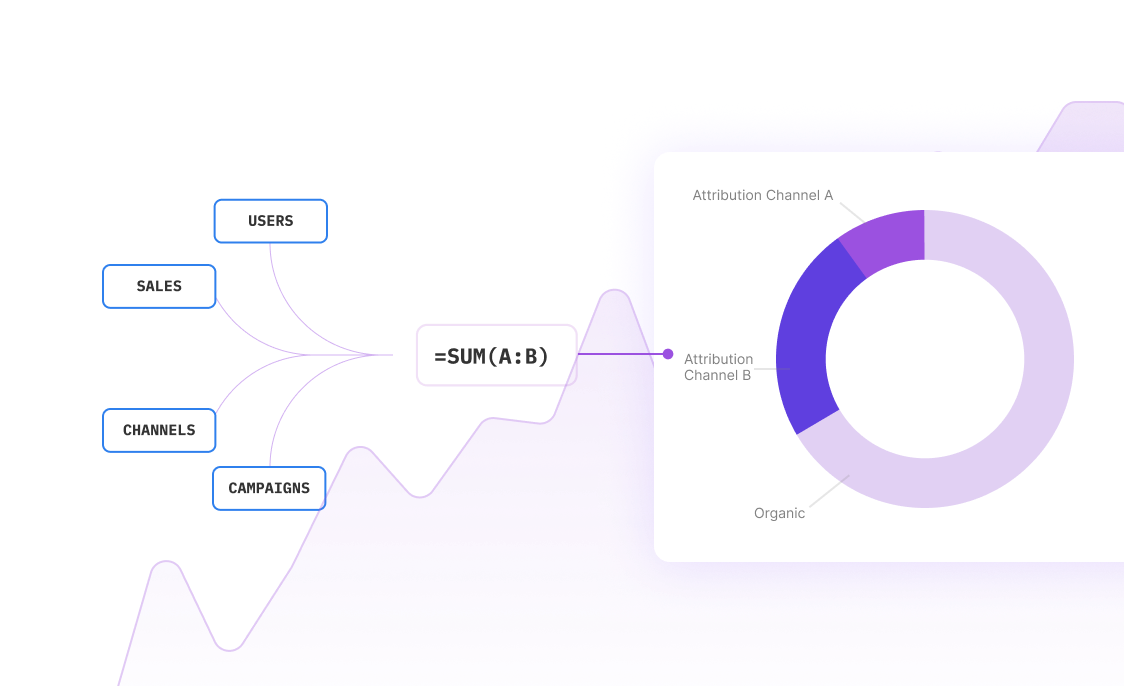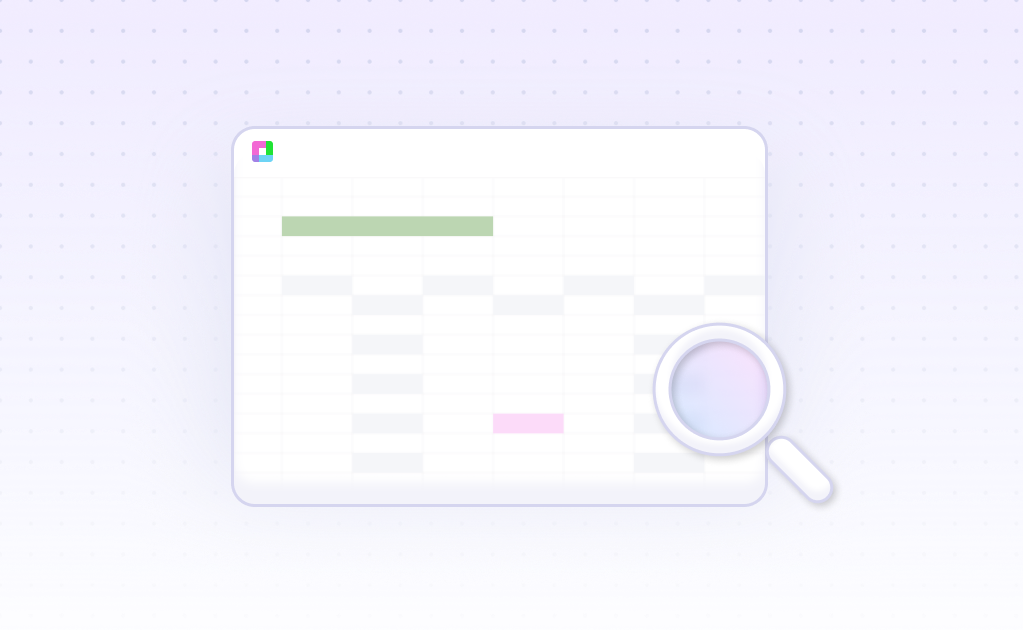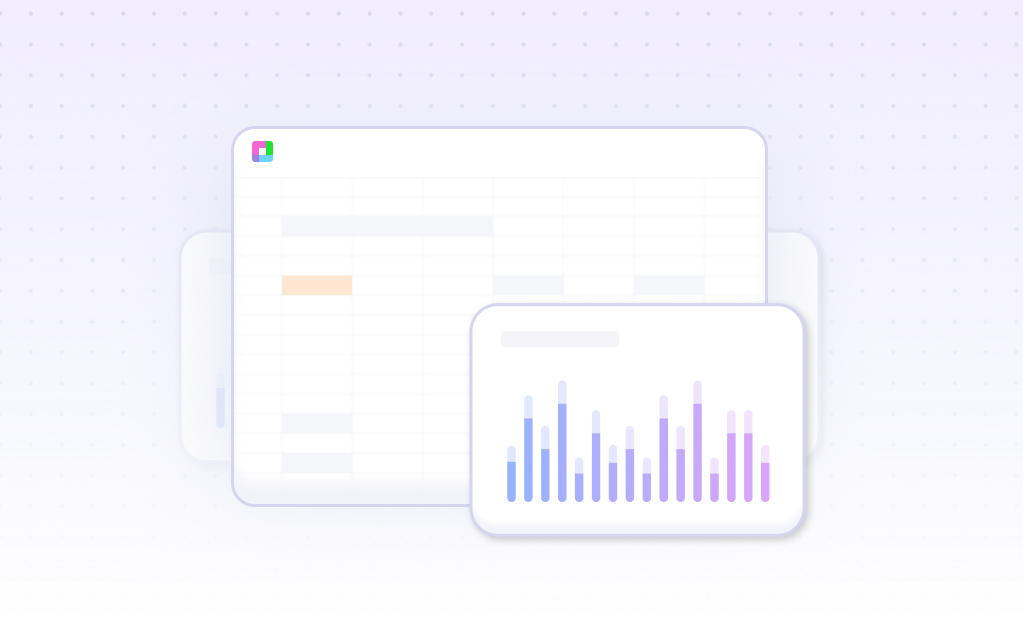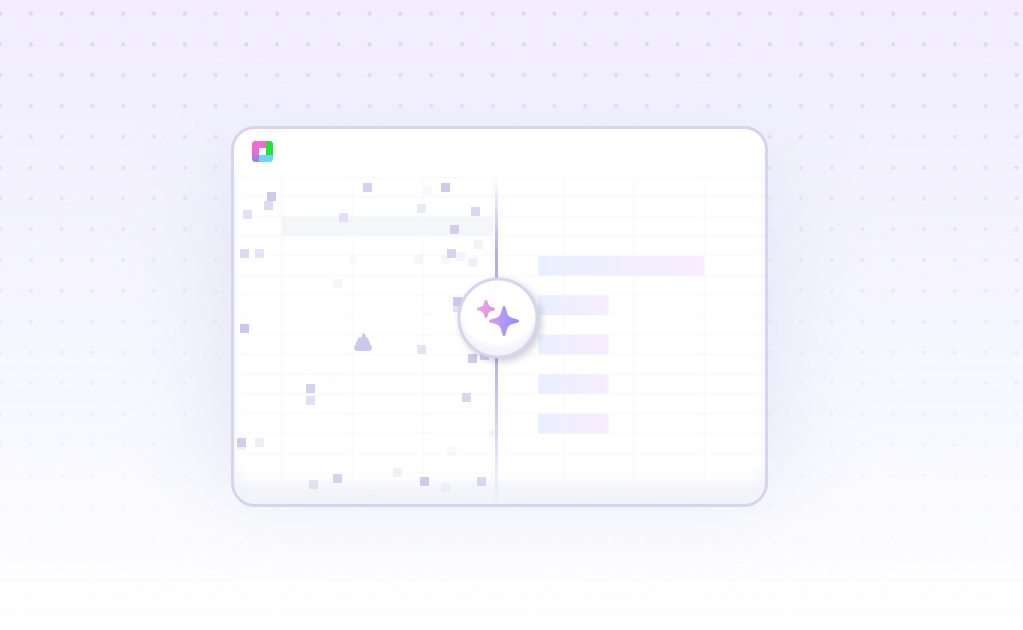
Introduction
Panel analysis, a powerful statistical method for analyzing data across time and subjects, traditionally requires complex Excel operations. In Excel, XLSTAT-R performs panel regression using the plm function, requiring careful setup of dependent variables, explanatory variables, and time/individual identifiers. While effective, this process demands significant Excel expertise.
Sourcetable offers an AI-powered alternative that simplifies panel analysis. This innovative platform combines Excel's functionality with AI-driven automation, generating complex formulas and visualizations automatically. With SQL and Python integration, Sourcetable handles advanced data analysis while automating data cleaning and transformation tasks.
Discover how to streamline your panel analysis workflow with Sourcetable's AI capabilities at sourcetable.com/signup.
Why Sourcetable Is Superior for Panel Analysis
Sourcetable's AI-powered capabilities transform traditional spreadsheet analysis with automated data entry, complex calculations, and intelligent pattern recognition. Unlike Excel's manual pivot tables, Sourcetable's Data panel provides comprehensive visualization configuration and automated filter management.
Enhanced Data Management
Sourcetable's AI algorithms clean and validate data automatically, significantly reducing human error compared to Excel's manual data entry process. The platform's Data panel displays all columns and joined table structures, enabling more efficient data organization than Excel's basic source tables.
Advanced Analysis Capabilities
While Excel relies on user-created pivot tables for data presentation, Sourcetable's AI generates insights automatically. The system identifies patterns, analyzes large datasets, and creates comprehensive visualizations through natural language commands, eliminating the need for manual formula construction.
Productivity Benefits
Sourcetable automates repetitive tasks and complex calculations, allowing analysts to focus on value-added activities. This automation delivers faster, more accurate results than Excel's traditional spreadsheet approach, while improving data-driven decision-making through AI-powered insights.
Benefits of Panel Data Analysis with AI-Powered Spreadsheets
Panel data analysis provides powerful statistical insights by examining data from multiple entities over time. This methodology delivers precise estimates and enhanced statistical power through optimized data usage, incorporating both temporal and entity-level information.
Key Advantages of Panel Analysis
The technique enables researchers to track changes within subjects while simultaneously analyzing variations between subjects. By capturing both within-unit and between-unit variations, panel analysis reveals complex relationships in datasets that other methods might miss.
Enhanced Analysis with AI Features
Modern AI-powered spreadsheet tools enhance panel data analysis through natural language processing capabilities. Features like AI-powered column calculations, business question answering, and automated data analysis streamline the analytical process. The ASK_OPENAI formula enables direct AI integration for advanced data interpretation.
Panel Analysis Examples with Sourcetable: A Modern AI-Powered Alternative to Excel
Sourcetable's AI-powered spreadsheet capabilities enable sophisticated panel data analysis through natural language commands and integration with over 100 data sources. The platform handles both CSV and XLSX files while offering advanced formula computation, charting, and data cleaning features.
Economic and Financial Analysis
Analyze investment patterns across multiple firms over time, similar to the Grunfeld Investment Data spanning 10 firms over 20 years. Sourcetable's AI assistant helps process complex financial panel data through natural language queries and automated data cleaning.
Healthcare Analytics
Process large-scale healthcare datasets like the WHO's panel data on health care attainment across 191 countries. Sourcetable's integration capabilities and automated summarization features streamline the analysis of multi-year health metrics.
Municipal and Government Data
Examine government expenditure patterns using datasets similar to the Swedish municipalities study. Sourcetable's charting and formula capabilities help visualize spending trends across multiple jurisdictions and time periods.
Industrial and Manufacturing Analysis
Study manufacturing innovation patterns using large-scale industrial datasets. Sourcetable's data cleaning and summarization features help process complex panel data across numerous firms and time periods.
Panel Analysis Use Cases for Sourcetable
Trend Analysis and Summarization |
Identify and summarize key trends across large panel datasets, including GDP trends across countries and stock prices by firm. |
Sentiment Analysis |
Analyze sentiment patterns in financial market data and socioeconomic indicators across multiple time periods and groups. |
Fixed Effects Outlier Control |
Apply fixed effects analysis to control for locational differences and outliers in panel data, particularly useful for international economic comparisons. |
Cross-Sectional Unit Root Testing |
Perform panel data unit root tests to analyze shared movements across groups while accounting for cross-sectional independence or dependence using |
Frequently Asked Questions
What is panel analysis and what is it used for?
Panel analysis is a statistical method widely used in social science, epidemiology, and econometrics to analyze two-dimensional data that is both cross-sectional and longitudinal, typically collected over time and over the same individuals. A regression is run over these two dimensions of panel data.
How do you perform panel analysis?
Panel analysis is performed by using either fixed effect or random effect models. Before running panel data regressions, you need to check for stationarity using fisher type tests. If variables are not stationary, first difference transformations may be necessary. For datasets where the time dimension exceeds the number of individuals (T>N), xtgls is used.
How can Sourcetable help with panel analysis?
Sourcetable is an AI-native spreadsheet that uses cloud computing for fast calculations and supports 3d and 4d data types. It can handle billion-row datasets in sub-second time, sync with over 100 business applications, and features an AI copilot to assist with spreadsheet work. Its familiar Excel-like interface with A1 notation and cell-based referencing makes it accessible for analyzing large CSV files and creating reports.
Conclusion
Panel analysis in Excel provides robust statistical tools through XLSTAT, offering eight types of analysis including ANOVAs, Principal Component Analysis, and Hierarchical Clustering. These methods help determine product differentiation and assess panel reliability.
Sourcetable offers an AI-powered alternative that streamlines the panel analysis process. Its automation capabilities generate essential formulas like SUM and VLOOKUP, while providing advanced data analysis through SQL and Python integration. The platform's automatic data cleaning and chart generation features simplify the preparation and visualization steps.
Whether using Excel's XLSTAT or Sourcetable's AI capabilities, successful panel analysis requires proper data preparation, model selection, output evaluation, and robustness checks. Start automating your panel analysis today with a free Sourcetable account.
Recommended Analysis Guides
Connect your most-used data sources and tools to Sourcetable for seamless analysis.
Frequently Asked Questions
If you question is not covered here, you can contact our team.
Contact Us
